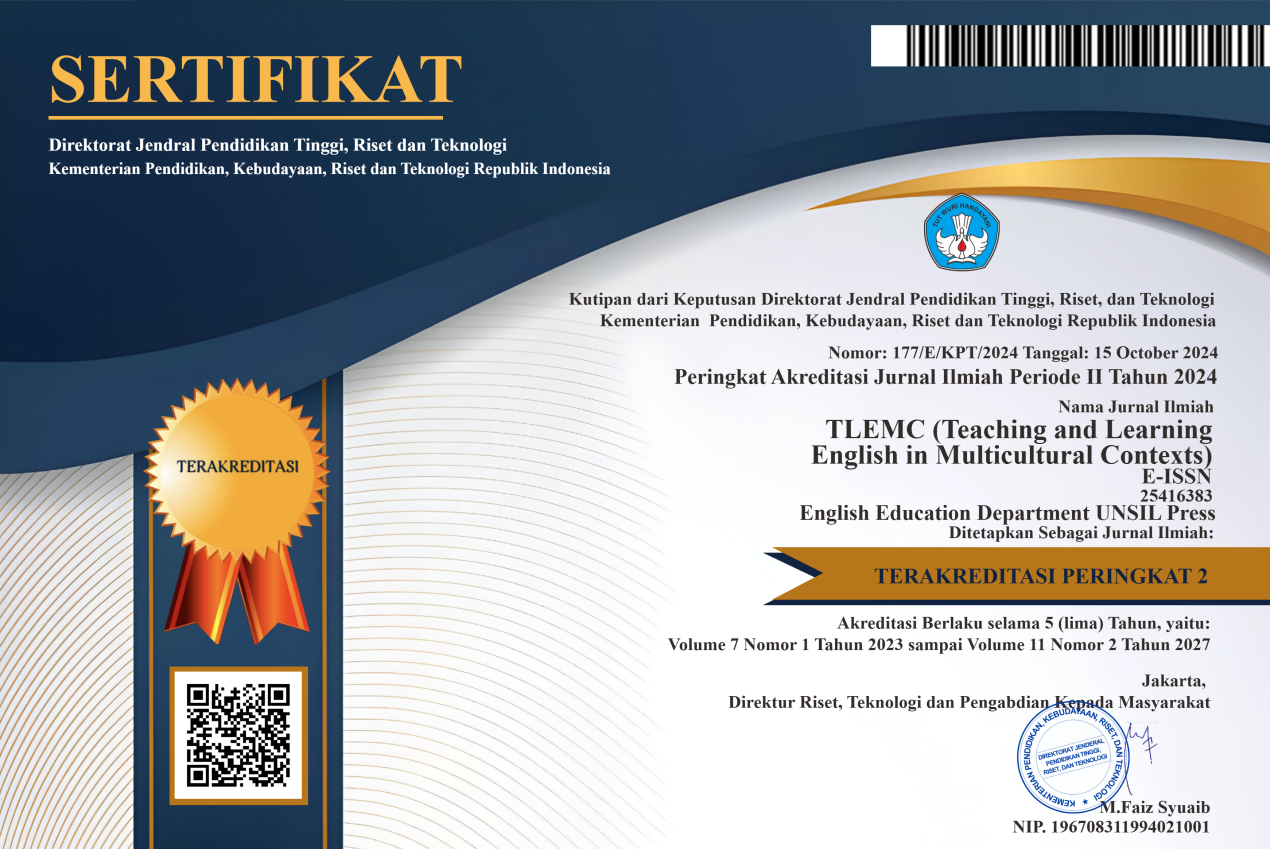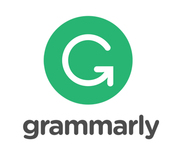Integrating AI-based paraphrasing into academic writing pedagogy: A reflective study on Quillbot in practice
Abstract
Integrating artificial intelligence (AI) into education has transformed traditional approaches to teaching and learning, particularly in academic writing instruction. This study investigates the pedagogical impact of using QuillBot, an AI-based paraphrasing tool, on students' academic writing performance and their perceptions of its use. Motivated by the increasing complexity of academic writing and the need for instructional innovation, this mixed-methods research examines learning outcomes and student experiences. Forty-fourth-semester students, consisting of 13 male and 27 female students, enrolled in an Academic Writing course, participated in the study. An explanatory sequential design was employed, starting with pre- and post-tests measuring writing performance, followed by semi-structured interviews to explore students' reflections. The results revealed a significant improvement in students' writing scores, with the mean increasing from 49.25 (pre-test) to 74.00 (post-test), indicating enhanced ability in paraphrasing and producing coherent academic texts. Students also reported that QuillBot helped them internalize academic language structures, improved their awareness of sentence patterns, and supported autonomous learning by providing immediate, accessible feedback. Moreover, they acknowledged the importance of ethical usage and viewed the tool as a guide rather than a shortcut. These insights highlight the dual role of AI tools as both linguistic support systems and pedagogical aids when thoughtfully integrated into instruction. Future research should consider broader and more diverse populations to deepen understanding of how AI-assisted writing tools shape student learning across different educational contexts.
Keywords: Academic writing, Paraphrasing, Artificial intelligence, Quillbot
Full Text:
PDFReferences
Amani, N., & Bisriyah, M. (2025). University students' perceptions of AI-assisted writing tools in supporting self-regulated writing practices. IJELTAL: Indonesian Journal of English Language Teaching and Applied Linguistics, 10(1), 91-107.
Andriani, A., Fatimah, A. S., & Permatasari, S. A. (2024). Investigating EFL students' self-efficacy on the use of QuillBot paraphrasing tool in academic writing. ENGLISH FRANCA: Academic Journal of English Language and Education, 8(1), 33-52.
Ardelia, I., & Tiyas, Y. R. I. (2019). The acquisition of paraphrasing and its impact on teaching and learning quotations to avoid plagiarism. Getsempena English Education Journal, 6(1), 159-171. https://doi.org/10.46244/geej.v6i1.873
Asnas, S. A. M., Mustofa, M., & Ubaidillah, M. F. (2022). Investigating academic writing in EFL contexts: Students' voices on complexities and coping strategies. Vision: Journal for Language and Foreign Language Learning, 11(2), 139–162. https://doi.org/10.21580/vjv12i116326
Cheung, C. L. (2014). Application of Scaffolds in Genre-Informed Approach to Second Language (L2) Writing Instruction: A Case-Study of EFL Students with Low Proficiency. The Chinese University of Hong Kong (Hong Kong).
Dave, A. M., & Russell, D. R. (2010). Drafting and revision using word processing by undergraduate student writers: Changing conceptions and practices. Research in the Teaching of English, 44(4), 406-434. https://doi.org/10.58680/rte201010849
Ellerton, W. (2023). The Human and Machine: OpenAI, ChatGPT, Quillbot, Grammarly, Google, Google Docs, & humans. Visible Language, 57(1), 38-52.
Gay, L. R., Mills, G. E., & Airaisan, P. W. (2012). Educational Research: Competencies for Analysis and Applications (10th Ed.). Pearson.
Gürbüz, N. (2024). The Impact of Quillbot as an Automated Writing Evaluation Tool on EFL learners. Journal of Educational Studies and Multidisciplinary Approaches, 4(2).
Fielden, K., & Joyce, D. (2008). An analysis of published research on academic integrity. International Journal for Educational Integrity, 4(2). https://doi.org/10.21913/IJEI.v4i2.411
Fraenkel, J. R., & Wallen, N. E. (2009). How to Design and Evaluate Research in Education (7th Ed.). McGraw-Hill.
Herda, R. K., Travero, A. S., Kafabih, A., Koeswoyo, A. W., Sari, R. N., Hakiki, F. I., & Wahidah, N. (2024). Opportunities Of Using Chatgpt In Academic Writing: Perceptions Of The Philippines And Indonesian Students. Jurnal Wahana Pendidikan, 11(2), 205-214. http://dx.doi.org/10.25157/jwp.v11i2.14922
Herda, R. K., Principe, R. A., Travero, A. S., Harahap, M. F. P., Viantika, S., & Hamidi, M. A. (2024). Voicing Philippines and Indonesian Students' Needs of Automated Written Corrective Feedback in EFL Writing Classrooms. JELITA: Journal of Education, Language Innovation, and Applied Linguistics, 3(1), 1-12. https://doi.org/10.37058/jelita.v3i1.8920
Honebein, P. C., Duffy, T. M., & Fishman, B. J. (1993). Constructivism and the design of learning environments: Context and authentic activities for learning. In Designing Environments for Constructive Learning (pp. 87-108). Springer Berlin Heidelberg.
Khabib, S. (2022). Introducing artificial intelligence (AI)-based digital writing assistants for teachers in writing scientific articles. Teaching English as a Foreign Language Journal, 1(2), 114-124. https://doi.org/10.12928/tefl.v1i2.249
Kim, Y., Le, T. L. V., Kim, D., Lee, M., & Lee, S. J. (2024). How Non-native English Speakers Use, Assess, and Select AI-Generated Paraphrases with Information Aids. arXiv preprint arXiv:2405.07475.
Krajka, J., & Olszak, I. (2024). Artificial intelligence tools in academic writing instruction: Exploring the potential of on-demand AI assistance in the writing process. Roczniki Humanistyczne, 72(6), 123-140.
Latifah, S., Muth’im, A., & Nasrullah, N. (2024). The Use of QuillBot in Academic Writing: A Systematic Literature Review. Journey: Journal of English Language and Pedagogy, 7(1), 110-121. https://doi.org/10.33503/journey.v7i1.872
Lina, M. F. (2021). Using social media for online English assignments: Problems and solutions. TLEMC (Teaching and Learning English in Multicultural Contexts), 5(2), 144-155. https://doi.org/10.37058/tlemc.v5i2.3579
Ma, Y., Qing, L., Kang, Y., Liu, J., Zhang, Y., Cheng, Q., ... & Liu, X. (2025). Refinement and Revision in Academic Writing: Integrating Multi-source Knowledge and LLMs with Delta Feedback. Expert Systems with Applications, 277, 127226.
Marzuki, , Widiati, U., Rusdin, D., Darwin, , & Indrawati, I. (2023). The impact of AI writing tools on the content and organization of students' writing: EFL teachers' perspective. Cogent Education, 10(2). https://doi.org/10.1080/2331186X.2023.2236469
Mascolo, M. F. (2009). Beyond student-centered and teacher-centered pedagogy: Teaching and learning as guided participation. Pedagogy and the human sciences, 1(1), 3-27. Retrieved from https://scholarworks.merrimack.edu/phs/vol1/iss1/6
Mohammad, T., Falah Alzubi, A. A., Nazim, M. O. H. D., & Khan, S. I. (2024). Evaluating the effectiveness of Quillbot in improving students' paraphrasing skills: teachers' voices. Journal of theoretical and applied information technology, 102(6), 2556-2567.
Ou, A. W., Stöhr, C. & Malmström, H. (2024). Academic Communication with Ai-Powered Language Tools in Higher Education: From a Post-Humanist Perspective. System, 121. https://doi.org/10.1016/j.system.2024.103225.
Putri, D. M. (2020). An analysis of English Department Students' Accuracy and Originality in Paraphrasing Science Text. JURNAL PTI, 7(1), 27–31. https://doi.org/10.35134/jpti.v7i1.26
Safrida, G., & Puspitasari, D. (2024). Optimizing English Writing with AI: Unlock the Power of Quillbot. English Language Teaching Journal, 4(2), 61-68. https://doi.org/10.35897/eltj.v4i2.1405
Selvakumar, P., & Manjunath, T. C. (2025). AI in Text Paraphrasing. In Using AI Tools in Text Analysis, Simplification, Classification, and Synthesis (pp. 351-376). IGI Global Scientific Publishing.
Solvie, P., & Kloek, M. (2007). Using technology tools to engage students with multiple learning styles in a constructivist learning environment. Contemporary issues in technology and teacher education, 7(2), 7-27.
Tintero, M. J., Gaspar, J., Butial, B., Malazzab, M., Columna, A., Bravo, J., & Tamanu, M. J. (2024). AI as a system: quality of Quillbot-assisted written discourse of teacher education students. Journal of Social Sciences and Humanities, 3(1).
Wijaya, A. (2018). Students’ Responses toward the Use of WhatsApp in Learning. Journal of Teaching & Learning English in Multicultural Contexts, 2(1), 46-55. https://doi.org/10.37058/tlemc.v2i1.489
Yu, S., Zhang, Y., Liu, C., & Lee, I. (2022). From theory to practice: Understanding the long-term impact of an L2 writing education course on writing teachers. Language Teaching Research. https://doi.org/10.1177/13621688221130852
DOI: https://doi.org/10.37058/tlemc.v9i1.15127
Refbacks
- There are currently no refbacks.
INDEXED BY:
This work is licensed under a Creative Commons Attribution-NonCommercial-ShareAlike 4.0 International License.
![]()
TLEMC (Teaching and Learning English in Multicultural Contexts)
Program Studi Pendidikan Bahasa Inggris
Fakultas Keguruan dan Ilmu Pendidikan
Universitas Siliwangi
Jl. Siliwangi No. 24 Kota Tasikmalaya - 46115
email: tlemc@unsil.ac.id





